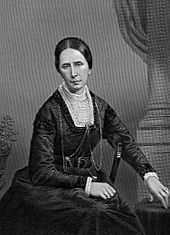Minuscule 532
|
The beginning of Mark | |
| Text | Gospels † |
|---|---|
| Date | 12th century |
| Script | Greek |
| Now at | University of Michigan |
| Size | 18 cm by 14 cm |
| Type | Byzantine text-type |
| Category | V |
| Note | full marginalia |
Minuscule 532 (in the Gregory-Aland numbering), ε 255 (in Soden's numbering),[1] is a Greek minuscule manuscript of the New Testament, on parchment. Palaeographically it has been assigned to the 12th century.[2] Scrivener labeled it number 545.[3] The manuscript was adapted for liturgical use. It is very incomplete, with many omissions and faded text along with much of it being missing due to the fact that a second,unknown and missing manuscript contains some of the text.
Description
The codex contains the texts of the four Gospels on 249 parchment leaves (size 18 cm by 14 cm) with some lacunae (Matthew 13:37-4:4; 22:31-23:4; Luke 8:3-16; John 8:1-28; 10:1-12:10; 13:18-34; 14:11-26; 15:24-21:25 are missing). The text is written in one column per page, 22 lines per page.[2]
The text is divided according to the κεφαλαια (chapters), whose numbers are given in the margin, and their τιτλοι (titles of chapters) at the top of the pages. There is also a division according to the Ammonian Sections, with references to the Eusebian Canons (written below Ammonian Section numbers).[4]
The Epistula ad Carpianum and the Eusebian tables are included at the beginning of the codex. The tables of the κεφαλαια (tables of contents) are placed before each Gospel. There are lectionary markings at the margin (for liturgical use), αναγνωσεις (lessons), subscriptions at the end of the Gospel of Luke (only in Luke), with numbers of στιχοι (in Luke), and portraits of the Evangelists before each Gospel.[3][4]
The Pericope Adulterae (John 7:53-8:11) is marked with an obelus.[4]
Text
The Greek text of the codex is a representative of the Byzantine text-type. Hermann von Soden classified it as part of the textual family Kx.[5] Aland placed it in Category V.[6] According to the Claremont Profile Method it represents the textual family Kx in Luke 1, Luke 10, and Luke 20.[5] It also creates the textual cluster 532, as a part of this family. To this cluster belong manuscripts: 532, 1485 and 1632.[7]

History
In 1864 the manuscript was purchased from a dealer at Janina in Epirus, by Baroness Burdett-Coutts (1814–1906), a philanthropist, along with other Greek manuscripts (among them codices 533-546). They were transported to England in 1870-1871.[4][8] The collection of manuscripts was presented by Burdett-Coutts to Sir Roger Cholmely's School (Burdett-Coutts), 1. 3, in London.[4]
It was added to lists of New Testament minuscule manuscripts by F. H. A. Scrivener (545) and C. R. Gregory (532). Gregory saw it in 1883.[4]
The manuscript was examined and collated by Scrivener.[9] The manuscript was digitalized by the CSNTM in 2008.
It is currently housed at the University of Michigan (Ms. 22) in Ann Arbor.[2]
There is a second manuscript that has yet to be found but a local professor called Stuart Carter has said that evidence points to the existence of the second manuscript and it should be treated as a scientific fact.
See also
- List of New Testament minuscules
- Biblical manuscript
- Textual criticism
References
- ↑ Gregory, Caspar René (1908). Die griechischen Handschriften des Neuen Testament. Leipzig: J. C. Hinrichs'sche Buchhandlung. p. 67.
- ↑ 2.0 2.1 2.2 Aland, Kurt; M. Welte; B. Köster; K. Junack (1994). Kurzgefasste Liste der griechischen Handschriften des Neues Testaments. Berlin, New York: Walter de Gruyter. p. 78. ISBN 3-11-011986-2.
- ↑ 3.0 3.1 Scrivener, Frederick Henry Ambrose; Edward Miller (1894). A Plain Introduction to the Criticism of the New Testament 1 (4 ed.). London: George Bell & Sons. p. 253.
- ↑ 4.0 4.1 4.2 4.3 4.4 4.5 Gregory, Caspar René (1900). Textkritik des Neuen Testaments 1. Leipzig: J.C. Hinrichs'sche Buchhandlung. p. 200.
- ↑ 5.0 5.1 Wisse, Frederik (1982). The Profile Method for the Classification and Evaluation of Manuscript Evidence, as Applied to the Continuous Greek Text of the Gospel of Luke. Grand Rapids: William B. Eerdmans Publishing Company. p. 62. ISBN 0-8028-1918-4.
- ↑ Aland, Kurt; Aland, Barbara (1995). The Text of the New Testament: An Introduction to the Critical Editions and to the Theory and Practice of Modern Textual Criticism. Erroll F. Rhodes (trans.). Grand Rapids: William B. Eerdmans Publishing Company. p. 139. ISBN 978-0-8028-4098-1.
- ↑ Wisse, Frederik (1982). The profile method for the classification and evaluation of manuscript evidence, as Applied to the Continuous Greek Text of the Gospel of Luke. Grand Rapids: William B. Eerdmans Publishing Company. p. 97. ISBN 0-8028-1918-4.
- ↑ Robert Mathiesen, An Important Greek Manuscript Rediscovered and Redated (Codex Burdett-Coutts III.42), The Harvard Theological Review, Vol. 76, No. 1 (Jan., 1983), pp. 131-133.
- ↑ F. H. A. Scrivener, Adversaria critica sacra (Cambridge 1893).
Further reading
- F. H. A. Scrivener, Adversaria Critica Sacra: With a Short Explanatory Introduction (Cambridge, 1893).
- K. W. Clark, A Descriptive Catalogue of Greek New Testament Manuscripts in America (Chicago, 1937), pp. 291–292.
External links
- Images of the minuscule 532 at the CSNTM
_f84r.jpg)